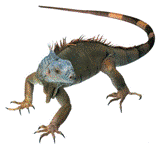Papers in the Biological Sciences

Papers in Herpetology
Document Type
Article
Date of this Version
November 2003
Abstract
We studied the ecology of a population of Sceloporus undulatus speari from the Transmontane Sand Dune region of northern Chihuahua, México. Most of the individuals in our population used fence posts or yucca plants as perches and were only rarely seen on the ground. The majority of individuals in our population were seen in full sun, although a substantial number were in shade. Mean body temperature in our population was 35.2°C. Individuals first seen in full sun had lower Tbs than individuals first seen in shade. Lizards using different microhabitats (e.g., yucca vs. fence post) had different body temperatures. Clutch size in our population was 5.23 eggs per clutch. Clutch size in our population was not statistically significantly related to female body size; however, the trend was for an increase in clutch size with SVL, with the smallest females having the smallest clutches. We found no evidence for sexual dimorphism in body size (SVL) in our population of S. undulatus, but males had larger heads. Coleopterans (particularly tenebrionids) and hymenopterans (particularly formicids) were the most important prey items.


Comments
Published in Journal of Herpetology, Vol. 37, No. 4 (2003), pp. 722–725. Copyright © 2003 Society for the Study of Amphibians and Reptiles. Used by permission. http://www.bioone.org/perlserv/?request=get-archive&issn=0022-1511